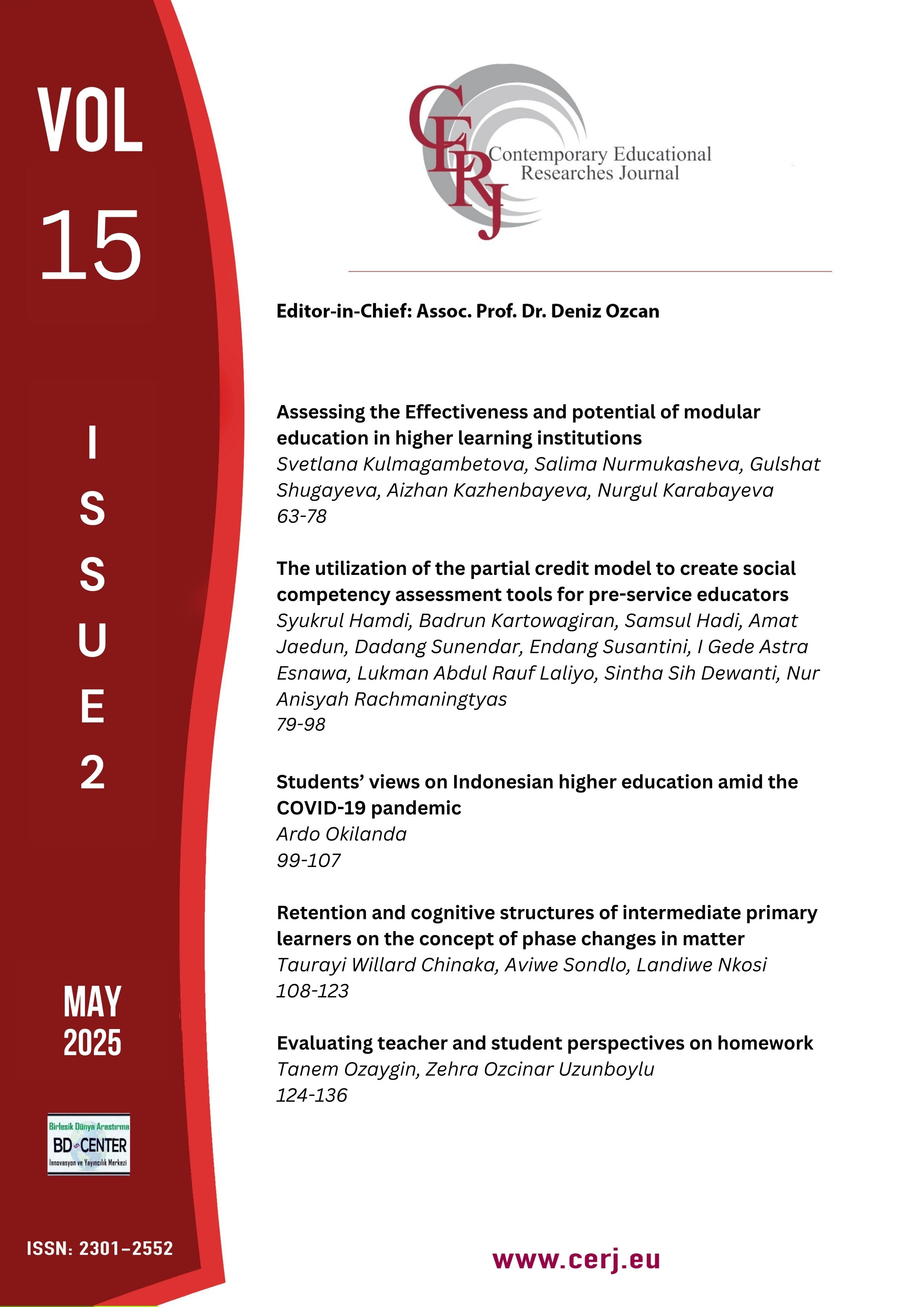Retention and cognitive structures of intermediate primary learners on the concept of phase changes in matter
Main Article Content
Abstract
Scientific concepts such as molecules, elements, and energy transformations are often abstract and inaccessible to learners' direct experiences, making conceptual understanding and retention challenging. This study examined the effectiveness of a States of Matter Physics Education Technology simulation in enhancing grade 6 learners’ cognitive structures and retention of phase change concepts. A mixed-method explanatory sequential design was adopted, incorporating pre-test, post-test, delayed post-test, word association tests, and interviews. Sixty-four learners participated, divided into an experimental group taught using the simulation and a control group taught through traditional methods. A validated two-tier diagnostic questionnaire and a Phase Change of Matter Test were administered to measure conceptual understanding and retention. The information processing theory served as the study’s theoretical foundation. Results revealed a statistically significant improvement in concept retention among learners exposed to the simulation, indicating its effectiveness over conventional instruction. However, cognitive structure analysis showed persistent reliance on non-scientific terminology. These findings underscore the value of integrating simulations into science instruction and suggest using word association tasks to identify and address learners' misconceptions. The study recommends further research on the long-term effects of such interventions on memory retention.
Keywords: Cognitive structure; conceptual retention; instructional simulation; phase change; science education
Downloads
Article Details

This work is licensed under a Creative Commons Attribution-NonCommercial-NoDerivatives 4.0 International License.
Authors who publish with this journal agree to the following terms:
- Authors retain copyright and grant the journal right of first publication with the work simultaneously licensed under a Creative Commons Attribution License that allows others to share the work with an acknowledgement of the work's authorship and initial publication in this journal.
- Authors are able to enter into separate, additional contractual arrangements for the non-exclusive distribution of the journal's published version of the work (e.g., post it to an institutional repository or publish it in a book), with an acknowledgement of its initial publication in this journal.
- Authors are permitted and encouraged to post their work online (e.g., in institutional repositories or on their website) prior to and during the submission process, as it can lead to productive exchanges, as well as earlier and greater citation of published work (See The Effect of Open Access).
